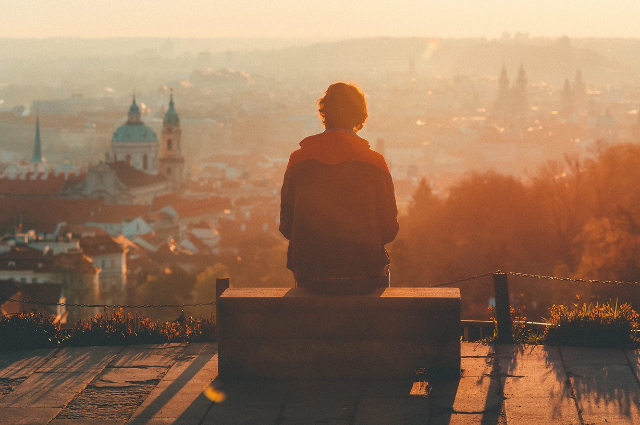
In a fast-paced society, choosing to slow down is a revolutionary act of self-preservation. Worth is measured by productivity, while stillness is equated with laziness. And every second of silence begs to be filled with something, anything. However, the soul moves differently. It does not rush. It does not compete. It expands—slowly, rhythmically, and in conscious presence. To stop the fast-paced rush of life is not to fall behind. It is finally time to begin to go down to the spirit in harmony with the soul. Our lifestyles are designed for haste. From the moment we wake up to the alarm, and scrolling, we multitask to breakfast and to chase the endless checklist, we are convinced that we are moving forward. But moving constantly scatters energy. If your mind is in five different places, your soul cannot be in any. The sacred energy flowing from the mind and soul embodies what Ayurveda calls Prana. It is something balanced, warm, and mindful. An overactive mind, with restlessness, is a sign of a Vat imbalance—too much air energy and space—anxiety, disconnection from the body, in the head.
Taking a rest was often frowned upon. For these healers, slowing down was a method of treatment. The rhythm of life was treated as a wild horse, needing to be tamed with stillness, oil massages, early permissions for sleep, and nourishing meals. A dish of warm khichdi, a cup of herbal tea, and a walk at sunset bring no luxury… it is simply a way of allowing your energy to flow home. This very understanding of life is evident in other cultures as well. The Japanese, for instance, celebrate the art of slowing down by way of Shinrin-Yoku. This is a method of simply walking and bathing in the forest, and getting in touch with your inner self. Breathing with the rhythm of the wind while walking, feeling the warmth of the sun, and listening to the birds… all these wonderful feelings simply replace the notifications and inane conversations. It is no surprise these acts soothe the heart and bring calmness to the soul. There are researchers in Japan who found simply practising Shinrin-Yoku for 20 minutes positively impacts the body and soul by lowering cortisol levels… it strengthens the immune system. Silence soothes the soul and brings back the glow. Harwood researchers found that constantly distracted wandering is a major contributor to unhappiness. This is all proof that ancient cultures and modern therapy alike work upon the lines that happiness is found only in the present.
When you focus excessively on the future, you stop fully experiencing the present, and your spirit begins to feel weary. Mindfulness helps you to recenter. Whenever you take a slow breath, consciously eat your meal, or just sit still, your awareness returns to the present moment where life occurs. Scientists have noted that physically slowing down can alter brain structure. Meditation, journaling, and taking time to rest strengthen the brain areas associated with clarity, empathy, and reasoning while the stress circuits calm down. Instead of cortisol and adrenaline, the body will produce more of the calm and peace-sustaining chemicals, serotonin and dopamine. Streams of consciousness and flow states are a product of neural coherence. Both states are beneficial. Stillness is a time to reflect and recharge. Unfortunately, a lot of people have been conditioned to believe that disorder is a sign of progress. Multitasking does not promote meaningful activity. Restlessness does not promote sustainable activity. Stillness and quiet are necessary to help promote introspection necessary to help you find your purpose. Slow living doesn’t mean you stop dreaming; it means you stop running from yourself.
Consider the calmest and happiest places on the planet. In the backwaters of Kerala, the day begins with silence and a cup of chai, not a screen. The locals work to the rhythm of the tides, not the 8-5. In Ladakh, monks spend hours watching prayer flags dance in the mountain air and don each movement a meditation, and a prayer, i.e. each breath. Yes, their lives seem simple, but the energy they radiate is of great strength because it is flowing, not scattered. Even modern corporations have started realising this. Google “Mindful Minutes” encourages employees to pause each day “to breathe, reflect, and refocus”. Apparently, slowing down does not decrease productivity. To live slowly is to live soulfully. It begins with waking up and not grabbing your phone, and then drinking your tea while fully aware of its warmth and aroma, and the cloud. It is not rushing to eat; it is about listening to someone while they speak without planning your reply, and finally, it is leaving unstructured time in your day.
Life at a slower pace allows an inner intelligence to surface. You learn that some messages can wait. Not every target needs to be accomplished this month. Not every break signifies lagging. The stillness can be profound. Journaling for an hour, reflecting during a solitary walk, or guiltlessly napping. These can be moments that spiritually recharge. Rest is not the other side of growth; it is fundamental to it. You can still face the world, but it is softer and steadier. You can work from essence and not exhaustion. You can feel that your worth is not dictated by speed, but by your presence. Your pace is magnetic. You are not falling behind when you slow your life; you are reclaiming your time. You are not losing time; you are arriving. The world spins at its pace, but your soul is still, at its pace. Rested and alive, it hums.
